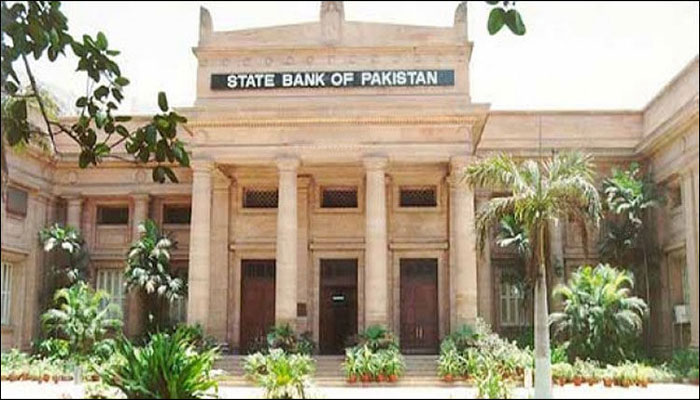Macro-economic stabilization steps start yielding: SBP report
State Bank of Pakistan (SBP) on Monday released its second quarterly Report on "The State of Pakistan's Economy for fiscal year 2018-19," which stated the effects of macroeconomic stabilization measures taken since December 2017 have started to unfold as the economy moved into the second quarter of fiscal year 2018-19.
Highlights
- the effects of macroeconomic stabilization measures taken since December 2017 have started to unfold
- monetary tightening along with exchange rate adjustments, reduction in development expenditures of the federal government and regulatory measures helped contain domestic demand
- inflation continued to increase
- the fiscal deficit continued to stay high
KARACHI: State Bank of Pakistan (SBP) on Monday released its second quarterly Report on "The State of Pakistan's Economy for fiscal year 2018-19," which stated the effects of macroeconomic stabilization measures taken since December 2017 have started to unfold as the economy moved into the second quarter of fiscal year 2018-19.
More specifically, monetary tightening along with exchange rate adjustments, reduction in development expenditures of the federal government and regulatory measures helped contain domestic demand, which is visible from a marked slowdown in imports, the report said.
This together with deceleration in external demand, under performance of major kharif crops, and moderation in the fixed investment loans led to notable deceleration in economic activity.
Meanwhile, inflation continued to increase, mainly due to cost-push factors and some persistence in underlying demand pressures.
According to the report, average headline Consumer Price Index inflation rose to 6.5 percent during quarter 2 of financial year 2018-19 - the highest quarterly inflation since quarter 1 of fiscal year 2014-15, when global crude oil prices were around $ 100 per barrel.
This trajectory was largely dictated by its core component, non-food non-energy (NFNE), which further gathered momentum as the pass-through of exchange rate depreciation and second round impact of high oil price accentuated its already elevated level.
Moreover, the report highlighted that the fiscal deficit continued to stay high despite a sharp cut in development spending since the beginning of FY2019 and is undermining the efforts to contain domestic demand.
While revenue collection declined, current expenditures increased.
Regarding the external sector, the report observed that there was an improvement in the current account deficit due to decline in imports and a marked increase in workers' remittances during the review period.
However, exports were generally affected by a slowdown in international demand.
Also, net financial inflows were lower than last year, leading to a drop in SBP's foreign exchange reserves.
The report contains a special section which evaluates the fiscal burden of state-owned enterprises in the power sector.
Recommended measures include a move towards more effective, apolitical collection process; investment in the transmission and distribution network; and creation of a national level consensus towards the formulation of a coherent energy sector policy.
The report features another special section on the importance of human capital in the context of CPEC.
"The analysis takes stock of the country's existing human capital and the employment opportunities set to arise in the near future as China-Pakistan- Economic-Corridor enters its next phase focusing on industrial, special economic zones and agriculture."
It then assesses just how prepared the domestic workforce is to capitalize on these opportunities, and provides a road map to address the associated skill-deficit.
In the big picture, the report underscores the need to step up investments in human capital and technology.
This will boost productivity and increase exportability of the country's goods, services and skilled labor, and allow it to generate foreign exchange in a sustainable
-
AI boom set to lift TSMC’s Q4 profit by 27%
-
An eye on 'global economic instability' as shares slumps, tensions intensify
-
Tesla dethroned: BYD shocks EV market as top seller in 2025
-
China sets up $8.9B fund to boost 2026 consumer goods trade-in
-
Meta to acquire Chinese AI startup Manus to expand advanced AI capabilities
-
China to roll out action plan for digital yuan expansion
-
Amazon halts plan for 'drone delivery in Italy' just before launch
-
Europe’s crypto adoption gains regional momentum; Who’s investing the most?












